Hokuto Saba
Once you try it, you'll never forget it
Bringing the authentic taste of Norwegian mackerel to your table
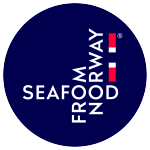
Bringing tastier Norwegian mackerel to Japanese tables
Mackerel is an indispensable part of the Japanese diet. In fact, about half of the mackerel sold in Japan is Norwegian.
Norwegian mackerel is grown in the cold, clear waters of Northern Europe and is caught under strict resource management only from autumn to winter when it is at its fattiest. This gives it a rich fat content and strong flavor.
TOREI has been involved in procuring Norwegian mackerel for many years, and with the desire to "produce Norwegian mackerel of higher value," "Hokuto Saba" was born, with an unwavering focus on flavor, freshness, and quality.
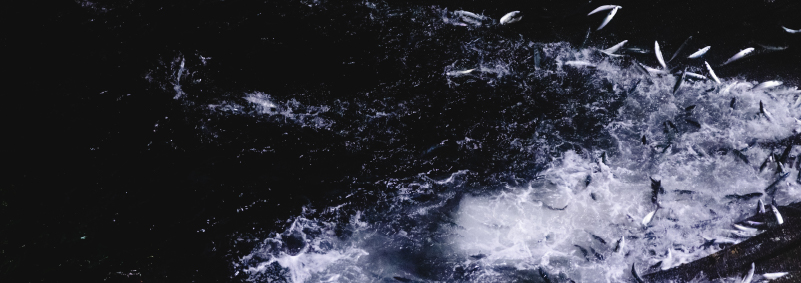
The secret to its deliciousness is the "one-frozen method"
Normally, Norwegian mackerel is frozen as is and then processed at factories both domestically and overseas, which means that it inevitably has to be frozen and thawed twice, which poses the issue of losing its flavor and nutrients.
Hokuto Saba has partnered with a factory in Norway, where the fish is salted while still raw, making it possible to use the "one-frozen method" of delivering it to your table after only being frozen once. This manufacturing method allows the original freshness and flavor of mackerel to be tightly locked in, allowing it to be enjoyed at Japanese dinner tables.
This is what makes the "One Frozen Method" different.
-
1."Excellent flesh color" that is the same as fresh fish
Even when thawed, the skin of Hokuto Saba remains shiny and the flesh is a transparent color with a slight reddish tint, giving it a fresh feel. It is chosen by many fresh fish stores due to its high commercial value, as it can be displayed in store in a state close to fresh fish. 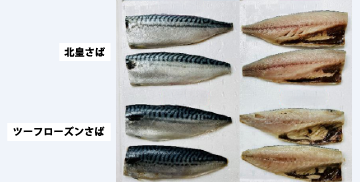
-
2.Superior flavor
Even when compared to the same Norwegian mackerel, it has been numerically proven that "Hokuto Saba" contains a higher amount of free glutamic acid. This superior flavor is what makes Hokuto Saba so appealing. 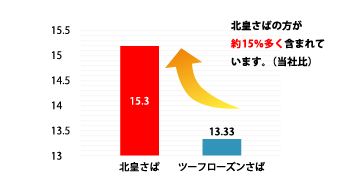
-
3.Scientifically proven freshness
Freshness plays a major role in determining the quality of fish, even if it is frozen. Indices that measure freshness and deterioration also prove that Hokuto Saba is very fresh and deteriorates very little.
Acid value (indicator of oil deterioration):
The lower the value, the less the oil has deteriorated.
Peroxide value (an indicator of oil deterioration):
The lower the value, the less the oil has deteriorated.
K value (indicator of freshness):
The lower the K value, the fresher the fish is.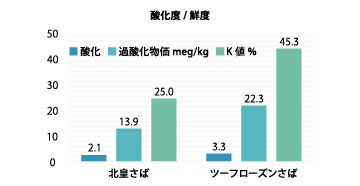
-
4.Thick flesh with a soft and fluffy texture
When comparing the two, the obvious difference is how fluffy and soft they are when eaten. Another feature is that the fish does not lose moisture because it is not frozen and thawed repeatedly, making it juicy, plump and easy to flake. 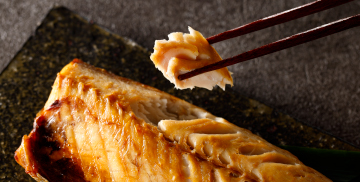
First, try grilling it and eating it as is.
"Hokuto Saba" is salt-seasoned, so it is delicious just by grilling it. The skin is crisp and the flesh is plump. When you put it in your mouth, the fat spreads in your mouth and, thanks to its exceptional freshness, it is a taste you will never forget once you have tried it.
"Hokuto Saba" will add a touch of luxury to your everyday meals.
This is a must-have item for your family dinner table.
